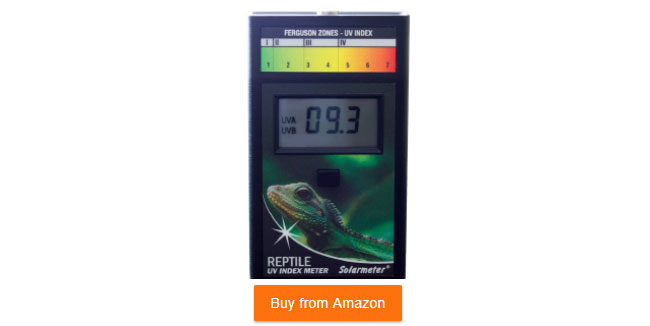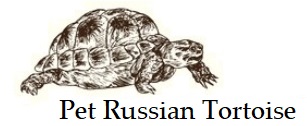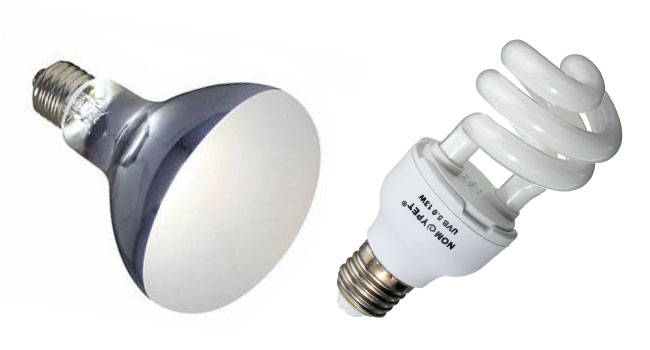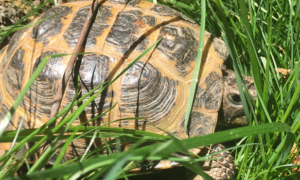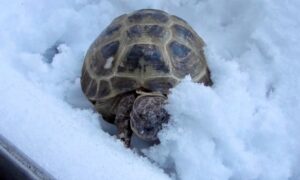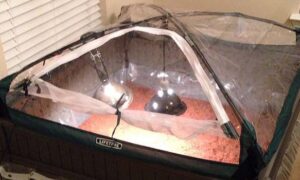UV is a MUST for raising a healthy Russian tortoise. UV helps prevent metabolic bone disease and aids calcium absorption. The best source of UV is natural sunlight, but for tortoises that are housed inside, you need to use a UV bulb.
If the weather is nice, put your tortoise outside. A few hours a week is all that your tortoise needs. So, even if it’s cloudy, as long as the temperature is right, put your tortoise outside to absorb natural UV. UV rays will penetrate the clouds, and your Russian tortoise will reap the benefits.
If you have a baby or a young Russian tortoise, put it outside in a predator-proof enclosure. Baby Russian tortoises can go outside for at least an hour per inch of shell length. Place the enclosure in an area with shade, or make sure to provide a good shaded house. Also, ensure there is fresh water available. A few hours a day will eliminate the need for a UV source in an inside enclosure.
But, if you can’t get your tortoise outside due to weather (too cold, hurricane, tornado, flood, extreme heat, etc), you’ll need a UV source for an indoor Russian tortoise enclosure.
Buy a UV Bulb
When shopping for a UV bulb, you’ll find a few name-brand options at your local pet stores. But if you’re shopping online for a UV bulb, you’ll find a lot of knock-off brands. Don’t be glamoured by the cheap prices.
Cheap, knock-off UV bulbs can be dangerous for your pet Russian tortoise. Bulbs by the unknown brands can cause too high UV rays, the wrong wave length or the wrong type of UV. UVA and UVB rays are safe for your Russian tortoise, whereas UVC is harmful.
Types of UV Bulbs
Mercury Vapor Bulbs
Mercury Vapor Bulbs are the best UV bulbs for tortoises. However, to be fair, some claim they have a short wavelength and can cause eye problems, like photokerato-conjunctivitis.
There are benefits to this type of UV bulb. The product emits both light and heat, which eliminate the need for a heat bulb and a UV bulb.
But, you want to stick with well-known brands, like ZooMed and Arcadia.
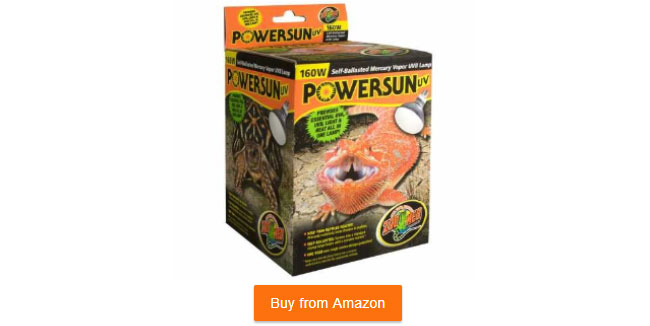
Compact UV Bulbs
The other common UV bulb that you will find is a compact UVB bulb. Compact UV bulbs screw into a socket like a light bulb and are either straight or coiled.
This type of UV bulb is NOT recommended for several reasons.
- There are reports of eye damage, including blindness, due to the intense UV emission at a close distance.
- Compact UV bulbs often have UV spikes, especially when using a new bulb.
- Compact UV bulbs do not provide a large enough UVB zone at sufficient intensity. So, in order to achieve the right intensity, you have to place the bulb closer to the tortoise. The close proximity to your tortoise can create too strong and possibly harmful UVB gradients.
Solar Meter
Use a good solar meter to determine when to replace the UV bulb. A solar meter will measure the UV output of the bulb. It will help you determine if your tortoise is getting too high intensity or too low. Typically, UV bulbs produce proper UV rays for six months, but you may find that some bulbs last longer than others, and vice versa.
Generally, UV bulbs should be replaced every six months to ensure optimal UV output. But, with a solar meter, you can test the output. You may find that after six months, the UV bulb is still producing adequate UV.
Russian tortoises are in zone 3 of the Ferguson Zone, with optimal UV output in the basking area between 2.9% – 7.4%. Replace the bulb when the output falls below 2.9%.
